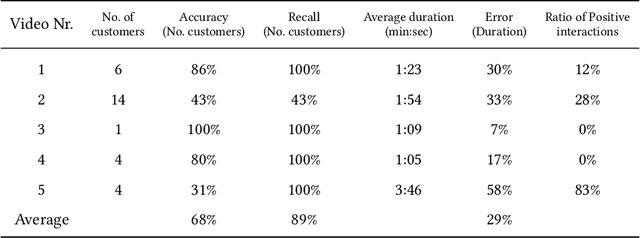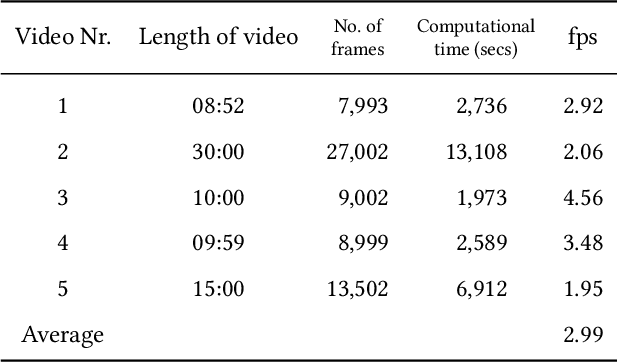Estimation of Psychosocial Work Environment Exposures Through Video Object Detection. Proof of Concept Using CCTV Footage
Paper and Code
Nov 06, 2024



This paper examines the use of computer vision algorithms to estimate aspects of the psychosocial work environment using CCTV footage. We present a proof of concept for a methodology that detects and tracks people in video footage and estimates interactions between customers and employees by estimating their poses and calculating the duration of their encounters. We propose a pipeline that combines existing object detection and tracking algorithms (YOLOv8 and DeepSORT) with pose estimation algorithms (BlazePose) to estimate the number of customers and employees in the footage as well as the duration of their encounters. We use a simple rule-based approach to classify the interactions as positive, neutral or negative based on three different criteria: distance, duration and pose. The proposed methodology is tested on a small dataset of CCTV footage. While the data is quite limited in particular with respect to the quality of the footage, we have chosen this case as it represents a typical setting where the method could be applied. The results show that the object detection and tracking part of the pipeline has a reasonable performance on the dataset with a high degree of recall and reasonable accuracy. At this stage, the pose estimation is still limited to fully detect the type of interactions due to difficulties in tracking employees in the footage. We conclude that the method is a promising alternative to self-reported measures of the psychosocial work environment and could be used in future studies to obtain external observations of the work environment.
 Add to Chrome
Add to Chrome Add to Firefox
Add to Firefox Add to Edge
Add to Edge